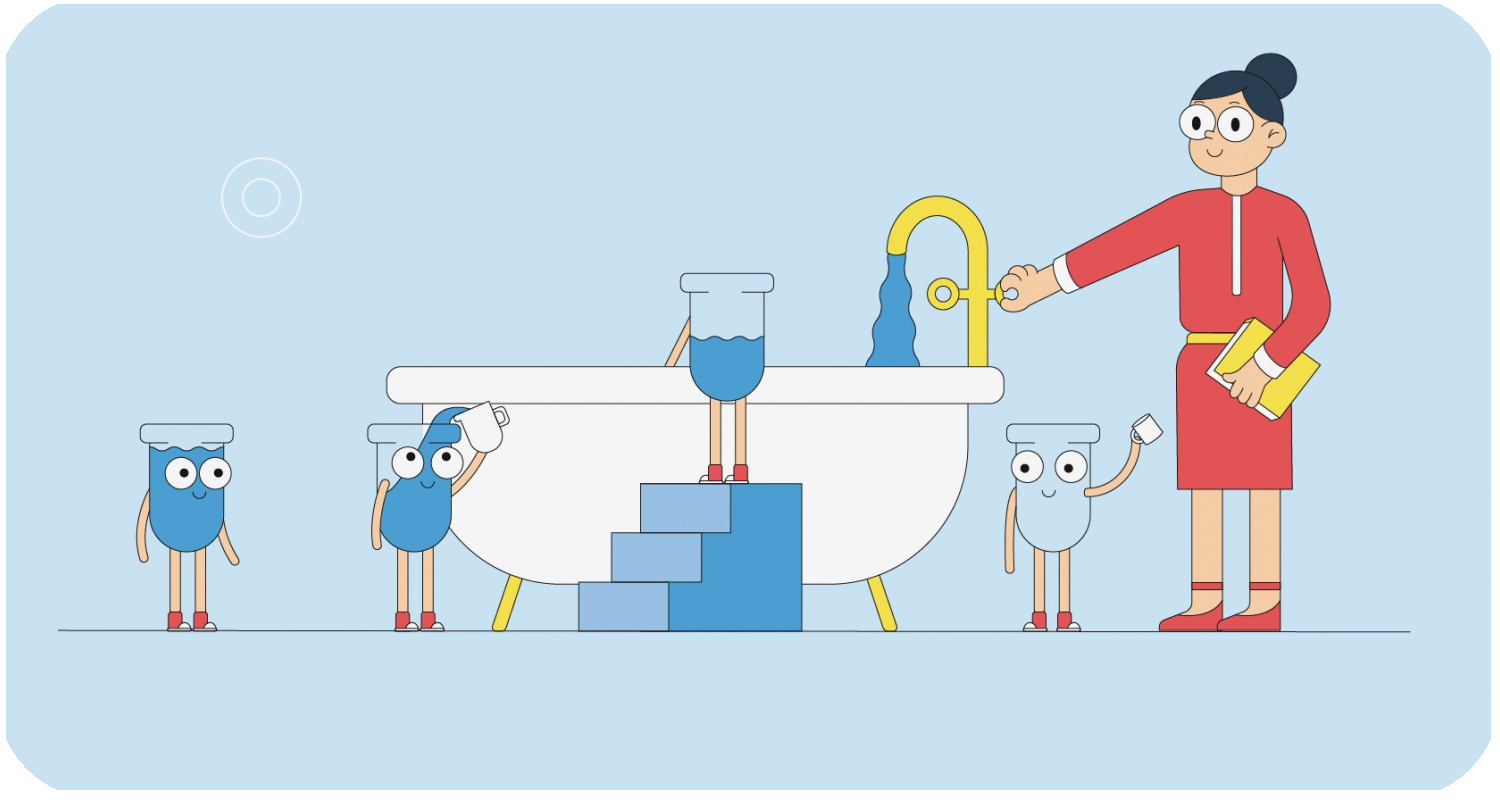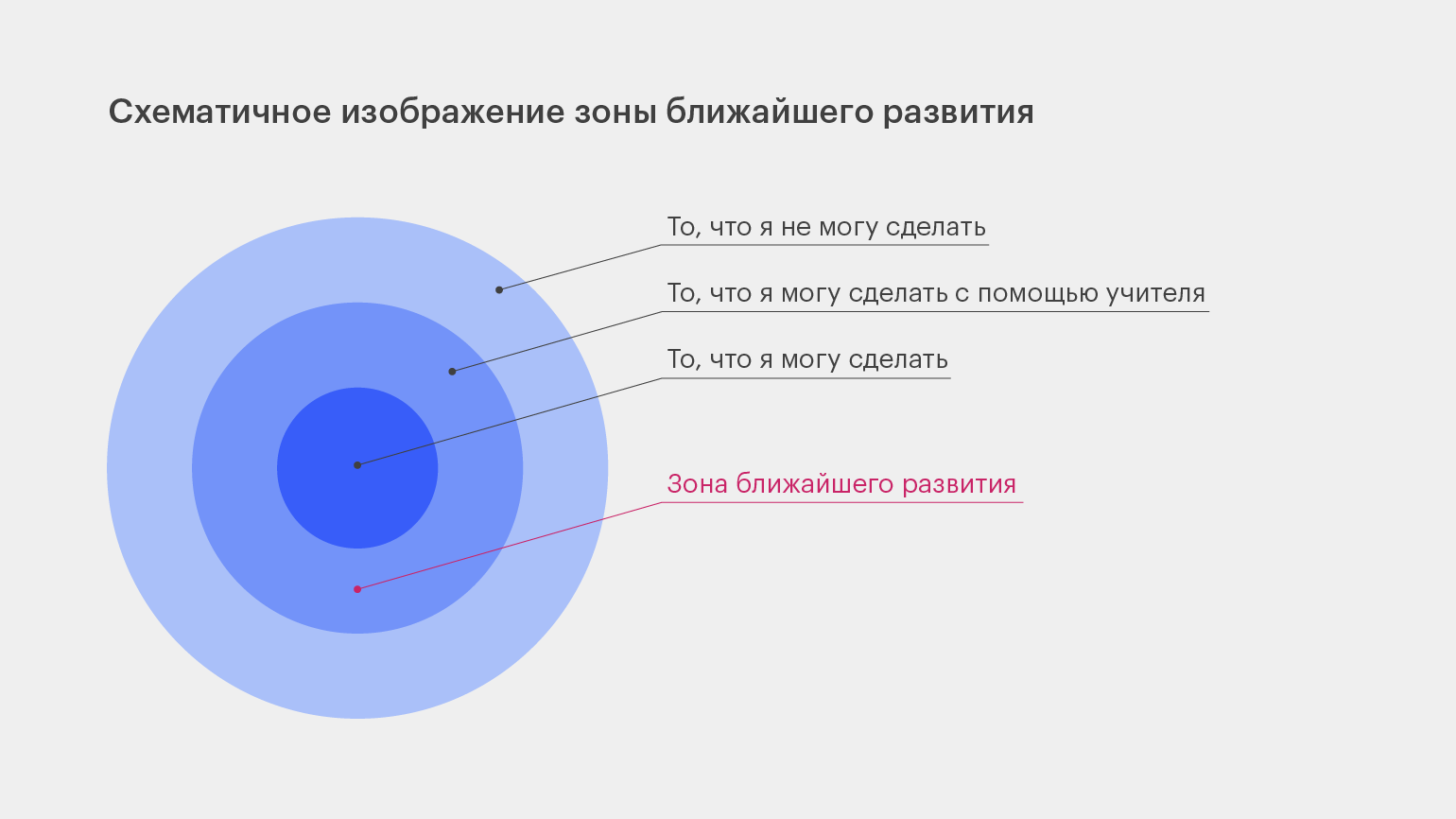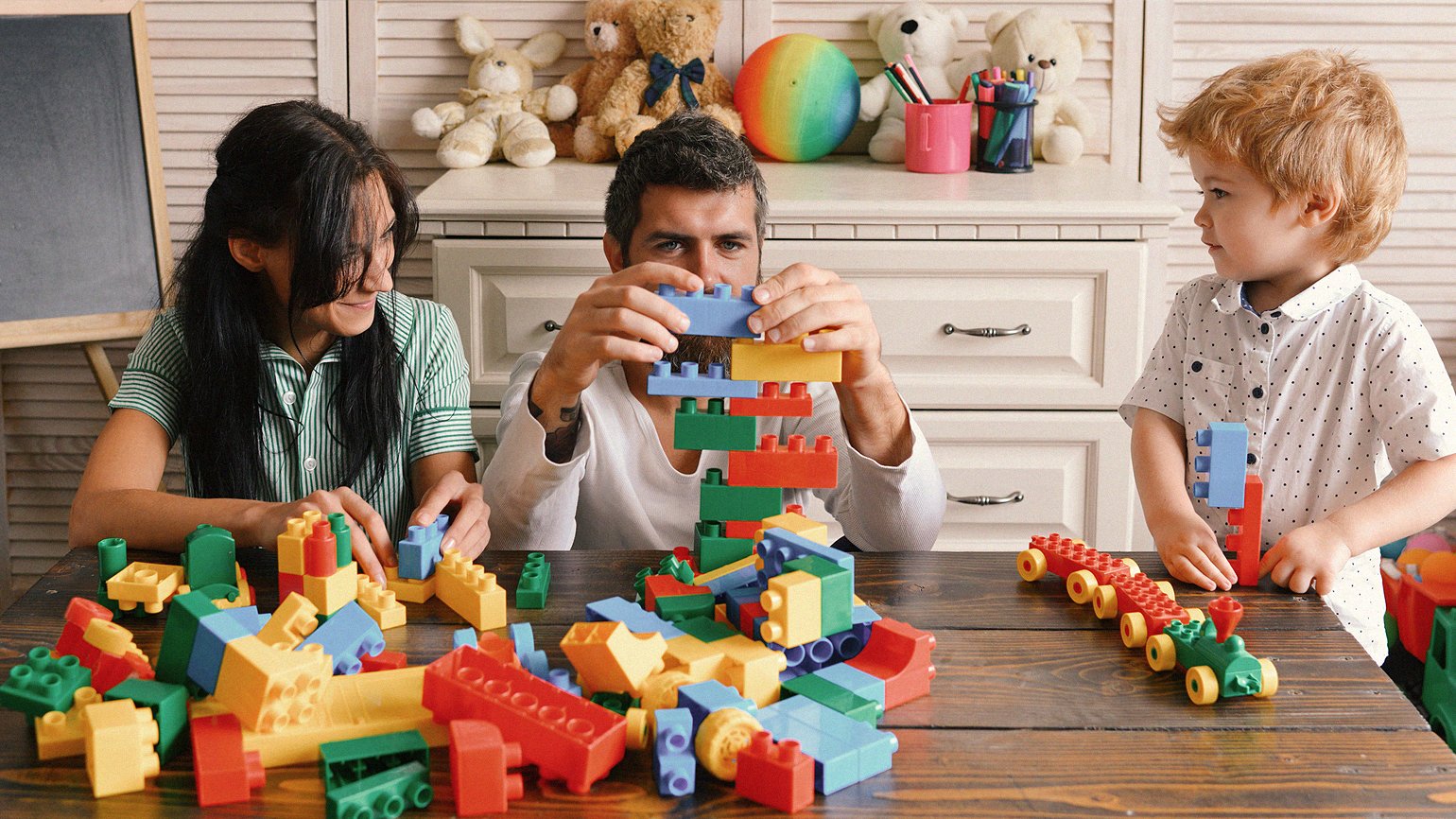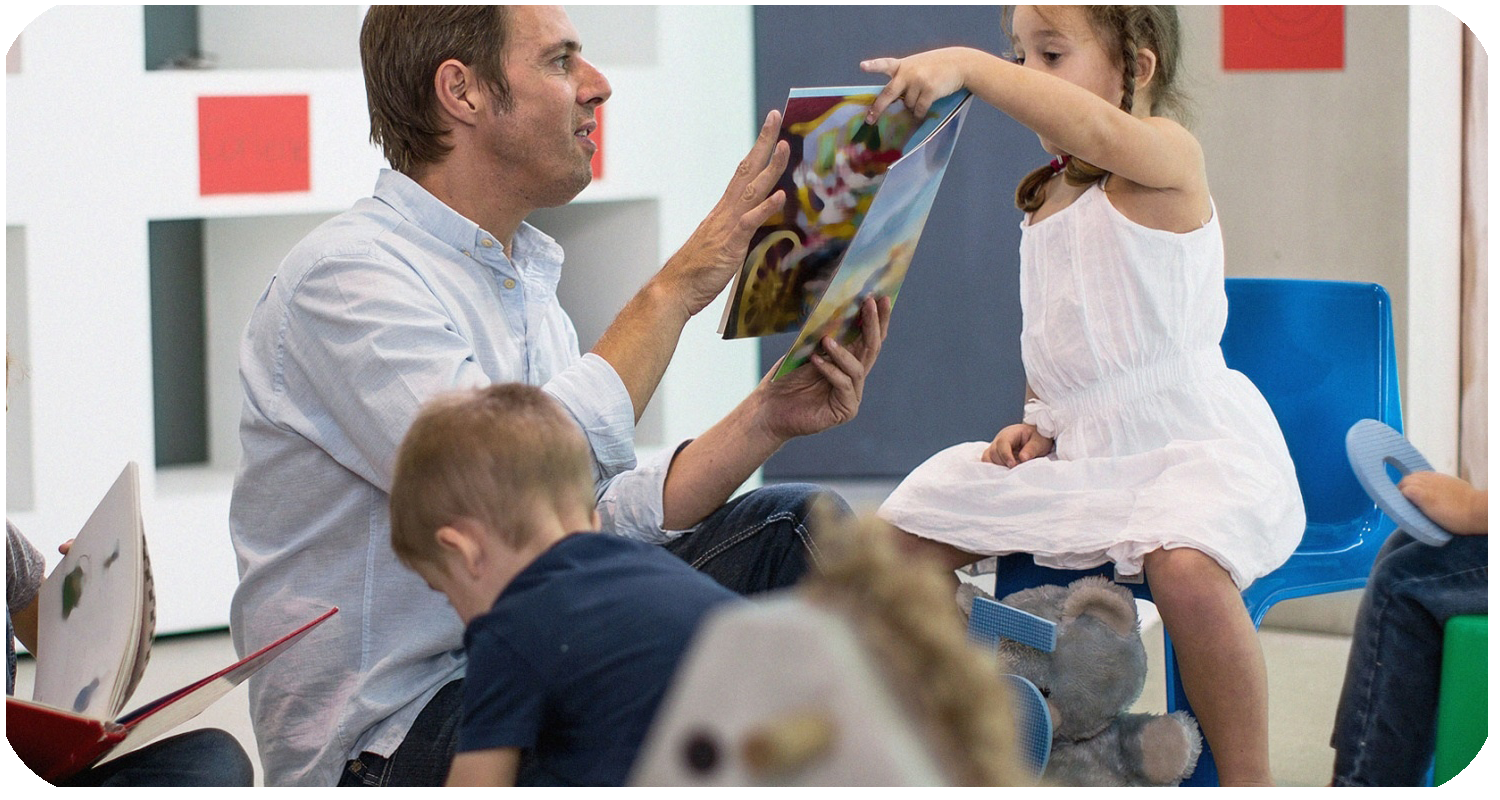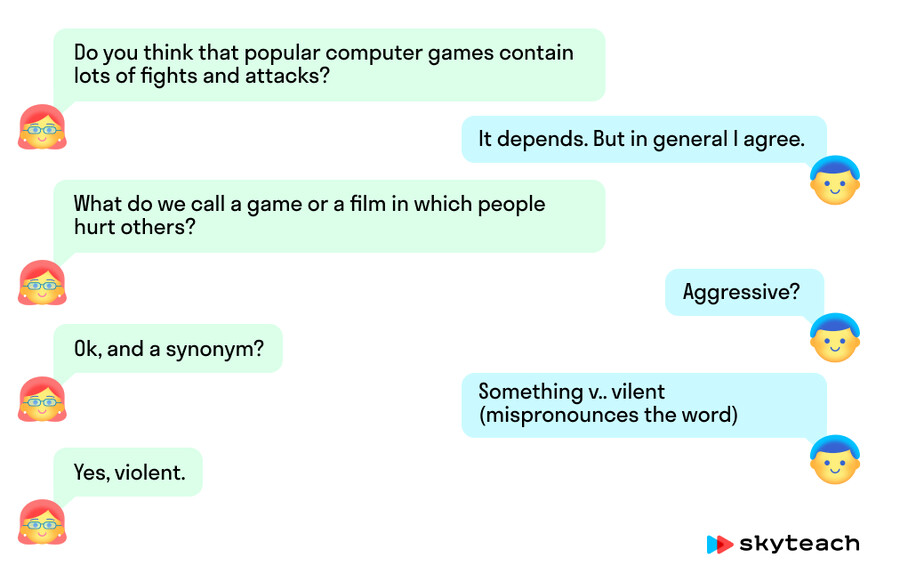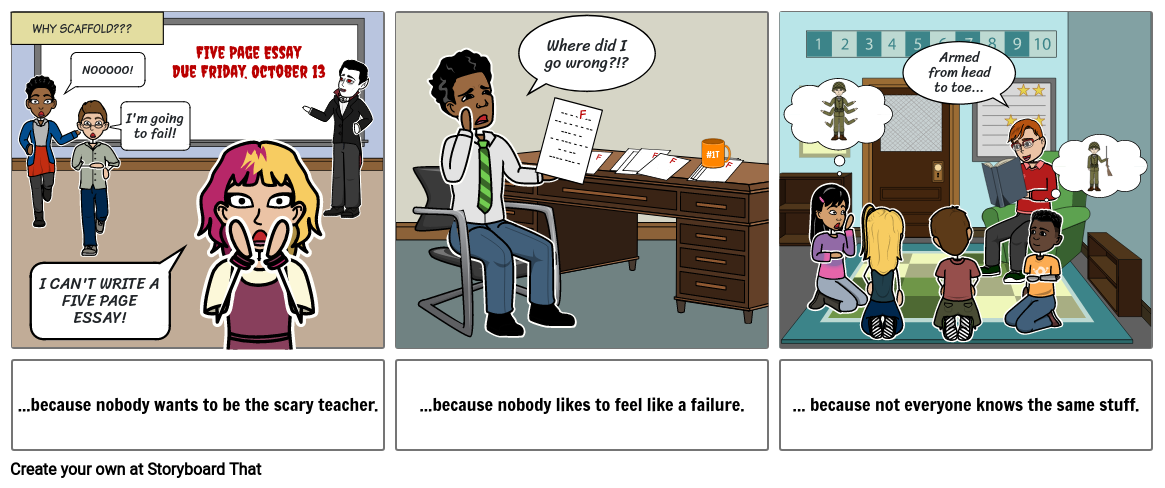What is scaffolding in education
What is scaffolding in education
Скаффолдинг: что такое теория строительных лесов и как применять её в обучении
Эта американская методика с советскими корнями помогает постепенно сформировать у учеников самостоятельность.
Катя Павловская для Skillbox Media
Из этой статьи вы узнаете:
Что такое скаффолдинг
В переводе с английского слово «скаффолдинг» (scaffolding) означает «строительные леса». В англоязычных образовательных медиа и литературе этим термином называют процесс, при котором обучающийся решает задачу при поддержке учителя или другого более опытного человека. При этом задача настолько сложна, что в одиночку ученик точно не справится, но при поддержке она оказывается ему по силам.
Эту поддержку и обозначают метафорой «строительных лесов», или «подпорок». Чем лучше ученик овладевает новым навыком или знанием, тем меньше он нуждается в этих «подпорках», и в конце концов учитель убирает их.
Чтобы сделать концепцию скаффолдинга ещё понятнее, американская преподавательница Ребекка Албер объясняет, что является его противоположностью: «Сказать ученикам: „Прочитайте научную статью на девять страниц, напишите подробное эссе на тему этой статьи и сдайте его в среду“».
Если учитель хочет, чтобы ученики поняли статью и запомнили главные тезисы, то, следуя логике скаффолдинга, перед тем как задавать написание эссе, он просмотрит материал вместе с обучающимися и объяснит ключевые термины. Ещё лучше разбить текст на части и прочитать каждую из них на занятии, обсуждая всем классом, считает Албер.
Главные принципы и критерии скаффолдинга
Теорию скаффолдинга в обучении впервые сформулировали в 1976 году американские психологи Джером Брунер, Дэвид Вуд и Гейл Росс в работе «Роль тьюторинга в решении задач».
«Процесс скаффолдинга, — писали авторы, — состоит по большей части в контролировании взрослым тех элементов задачи, которые поначалу выходят за пределы возможностей ученика, таким образом позволяя тому сконцентрироваться только на тех составляющих, которые ему по силам».
Стоит отметить, что в этой работе описывалось обучение детей дошкольного возраста, и речь шла не об учителе, а просто о более опытном взрослом — воспитателе, тьюторе, наставнике. Тем не менее описанные Брунером и его коллегами принципы вскоре стали считаться универсальными, а уже в 1979 году появилась первая научная работа, в которой главными участниками взаимодействия в рамках скаффолдинга названы уже не ребёнок и взрослый, а ученик и учитель.
Принципы скаффолдинга, описанные Брунером и его соавторами, звучат так:
Эти принципы в 1983 году Артур Эпплби и Джудит Ленджер дополнили пятью критериями скаффолдинга:
Таким образом, скаффолдинг — это временная поддержка ученика, которая постепенно должна сходить на нет. Ответственность за выполнение задания сначала разделена между учителем и учеником, а затем полностью переходит к последнему.
Советские корни теории скаффолдинга
Тем, кто знаком со взглядами на обучение советского психолога Льва Выготского, теория скаффолдинга может напомнить идею о зоне ближайшего развития. Задачи, с которыми сталкивается человек при обучении, Выготский поделил на три типа:
Задачи первого типа не учат нас ничему. Браться за задачи третьего типа бессмысленно, потому что они нам не по силам. И только при выполнении задач второго образца происходит обучение. Метафорическую область, в которой лежат такие задачи, Выготский и обозначил как зону ближайшего развития.
Теория Выготского получила широкое распространение на Западе: например, только в базе ResearchGate находится около ста материалов на эту тему. А близость её к концепции скаффолдинга привела к тому, что профильные ресурсы зачастую стали отождествлять эти две теории и даже приписывать изобретение скаффолдинга Выготскому. Однако, хотя скаффолдинг как раз и представляет собой обучение в зоне ближайшего развития, сам Выготский никогда не использовал термин «строительные леса» в контексте образования.
Тем не менее, как выяснили исследователи Анна Шварц и Артур Баккер, связь между концепцией скаффолдинга и Львом Выготским действительно существует. Оказывается, один из создателей теории строительных лесов Джером Брунер дружил с советским психологом и невропатологом Александром Лурией. Они вели переписку и несколько раз встречались на европейских конференциях. Лурия же, в свою очередь, находился в тесных отношениях с Львом Выготским и психофизиологом Николаем Бернштейном. И последний действительно упоминал в своих работах идею «деревянных лесов», описывая освоение человеком двигательных навыков.
«Деревянными лесами» Бернштейн называл функцию, которую выполняет так называемый ведущий уровень навыка — отвечающий за общий смысл двигательной задачи, но не за её нюансы. Суть этой концепции в том, что, когда мы только осваиваем какое-то умение, уловив его идею, мы можем рассчитывать только на примерное воспроизведение действия и лишь впоследствии благодаря практике доводим его до автоматизма.
«…Движение поначалу выполняется кое-как, „на костылях“: те виды чувствительности, какие имеются в инвентаре ведущего уровня, могут обеспечить коррекции, хоть временно, приблизительно выполняя роль деревянных лесов, с помощью которых в дальнейшем возводится каменный дом. И действительно, пока движение, хотя и с трудом, выполняется на этих суррогатных подпорках, успевают выработаться в низовых уровнях автоматизмы».
«О ловкости и её развитии»,
Николай Бернштейн
Использовал метафору «лесов» и сам Лурия, описывая психофизиологию ходьбы:
«…Ребёнок начинает ходить. Обычно это происходит не сразу. Сначала он пользуется внешними предметами, держится за них; он пробирается, держась за край кровати, за руку взрослого, за стул. Короче — его ходьба ещё не готова, она ещё „в лесах“ тех внешних орудий, с помощью которых она создаётся. Ещё месяц-другой — и ребёнок, выросши из этих „лесов“, отбрасывает их…»
«Этюды по истории поведения»,
Александр Лурия, Лев Выготский
Впрочем, книга, в которой Лурия использовал этот образ, была переведена на английский лишь в 1990-е. А вот одну из работ Бернштейна к моменту переписки Лурии и Брунера уже перевели. По рекомендации советского друга американский психолог её прочитал и остался в восторге.
Так, через переписку и беседы при личных встречах идея «строительных лесов», ходившая в кругу советских психологов и педагогов, в конце концов перекочевала в Америку.
Что об эффективности скаффолдинга говорит наука
Ещё в 1975 году коллега Брунера Дэвид Вуд в соавторстве с Дэвидом Миддлтоном опубликовал работу, в которой описал процесс, напоминающий скаффолдинг. В этом исследовании матери обучали своих детей собирать конструктор. У тех детей, которые строили в паре с мамами и получали от них советы, получались значительно более сложные конструкции, чем у тех, кто строил в одиночку. Успешнее всего были те дети, чьи матери корректировали стратегию поддержки с учётом того, как успешно ребёнок справлялся с заданием. Когда работа продвигалась легко, помощь становилась минимальной. Когда дети сталкивались с трудностями, матери давали более чёткие указания или показывали, как выполнить задачу.
В 1990-м похожие результаты были получены в исследовании, в котором сравнили скаффолдинг с обучением через открытия (когда ребёнок самостоятельно находит решение поставленной задачи). В эксперименте часть детей работала над заданием, поддерживая диалог с матерями, а другая часть — в одиночку, лишь иногда получая корректирующую обратную связь. В результате первая группа справлялась с заданиями значительно успешнее.
Исследование 2000 года, в котором, правда, участвовал всего один человек, показало, что скаффолдинг может быть полезен при обучении новому языку. Шестилетний участник эксперимента, говоривший на фарси, изучал английский язык. Сначала его обучали отдельным словам и фразам, затем задавали закрытые вопросы, а затем вопросы, требующие более содержательных ответов. Такое постепенное повышение сложности помогло ребёнку совершенствовать своё владение языком без лишнего стресса и фрустрации.
Наконец, автор исследования 2003 года отмечает, что, применяя принципы скаффолдинга, нельзя воспринимать учеников как пассивных исполнителей учительских инструкций. Это также противоречит идее Выготского о зоне ближайшего развития, согласно которой ученик — это в первую очередь самостоятельный исследователь.
Как применять скаффолдинг
Британский преподаватель Сол Маклеод со ссылкой на исследовательницу Дебби Силвер даёт такие рекомендации:
Авторы учебного пособия «Методы, стратегии и технологии преподавания, отвечающие потребностям всех учеников» (оригинальное название на английском — Instructional Methods, Strategies and Technologies to Meet the Needs of All Learners) дополняют этот список описанием основных методов скаффолдинга, ссылаясь на работу исследователей образования Кэтлин Хоган и Майкла Прессли.
Так, первый шаг в использовании скаффолдинга обычно моделирование, то есть демонстрация «поведения, которое показывает, как [ученик] должен чувствовать себя, думать или действовать в предложенной ситуации». Примером моделирования может быть методика «мысли вслух» (по-английски — think-aloud): учитель проделывает задание и озвучивает свои мысли, относящиеся к этой работе. Например, педагог может «думать вслух», пока будет разбивать новое для учеников слово на части, чтобы им стало легче его прочитать.
Не менее важны разъяснения о том, что изучается, зачем, когда и как это использовать. В начале пояснения должны быть подробными и часто повторяться. Но по мере прогресса ученика они могут становиться всё менее многословными и содержать только основные подсказки.
Кроме того, важно просить учеников активнее участвовать в процессе обучения — это будет повышать их сопричастность и ответственность за результат. А учитель после этого может давать позитивную обратную связь или вносить в действия ученика корректировки.
Далее авторы пособия приводят несколько конкретных примеров скаффолдинга.
Преподавательница Высшей школы образования и информационных исследований при Калифорнийском университете в Лос-Анджелесе, редактор-консультант образовательного медиа Edutopia.
Работа написана в соавторстве с Выготским, но, как утверждают Анна Шварц и Артур Баккер, им «известно из многих источников, что написал эту главу совместной монографии Лурия».
What Is Scaffolding in Education?
Don’t worry. We break down this term into bite-sized chunks.
You probably first learned the term before you started teaching. And then you likely started using the concept without even knowing it. But you may still be asking, “what is scaffolding in education?”
For starters, here’s a little background. In the 1930s, Soviet psychologist Lev Vygotsky developed the concept “zone of proximal development” or ZPD and determined that the correct way to test young students was to test their ability to solve problems both independently and with the help of a teacher.
In 1976, Vygotsky’s work was revived by researchers David Wood, Gail Ross and Jerome Bruner who coined the term “scaffolding.” Their report, “The Role of Tutoring in Problem Solving,” found that encouraging students to challenge themselves in grasping new concepts within their ZPD leads to success in learning.
What is scaffolding in education?
It’s a process of teaching where an educator models or demonstrates how to solve a problem, then steps back and encourages the students to solve the problem independently.
Scaffolding teaching gives students the support they need by breaking learning into achievable sizes while they progress toward understanding and independence.
In other words, it’s like when a house is being built. The crew uses scaffolding to help support the structure as its being built. The stronger the house is, the less it needs the scaffolding to hold it up. You’re supporting your students as they learn new concepts. The more their confidence and understanding grow, the less support or scaffolding they need.
The difference between scaffolding and differentiation
Sometimes teachers confuse scaffolding with differentiation. But the two are actually pretty different.
Differentiated instruction is an approach that helps educators tailor teaching so that all students, regardless of their ability, can learn the classroom material. In other words, tailoring teaching to meet the needs of different learning styles.
Scaffolding is defined as breaking learning into bite-sized chunks so students can more easily tackle complex material. It builds on old ideas and connects them to new ones.
Using scaffolding in the classroom
There are a variety of ways to use scaffolding in the classroom.
Benefits and challenges of scaffolding
Scaffolding does require time, patience and assessment. If a teacher doesn’t fully grasp where a student is in their comprehension, they may not position the student to successfully learn a new concept. However, when done correctly, scaffolding can give a student improved depth of understanding and problem-solving skills. It also provides a fun, interactive and engaging environment for students to learn in!
Скаффолдинг или 11 способов поддержать студента
В зоне комфорта ученикам нравится заниматься, но если нет развития — они скучают. С другой стороны, сложные задания учителя вызывают тревогу. Как сохранить высокие ожидания и при этом добиться продуктивного обучения? Оказать поддержку, которая в методике преподавания английского языка называется scaffolding.
Ее цель — помогать учащимся осваивать навыки и умения. В основе метода лежит учение Выготского о зоне ближайшего развития. Подробнее о классификации техник скаффолдинга читайте в нашей статье Scaffolding in the ZPD.
Предлагаем 11 практических советов для того, чтобы сделать содержание урока доступнее и помочь студентам преодолеть временные сложности.
1. Связывайте новые знания ученика с прежним опытом
Например, на уроке Adjectives to describe a video game я попросила взрослого студента описать компьютерные игры, в которые он играл в юности, и узнала о его отношении к играм. В итоге — студенту стал понятнее контекст урока.
Также стало ясно, какие слова студент уже знает. Например:
2. Разбивайте инструкции на части, проверяйте их понимание
Это особенно актуально для юных учеников на для групповых занятиях, а также для взрослых с уровнем ниже среднего. Подробнее о проверке инструкций читайте в нашей статье What are ICQs and CCQs?
3. Просите предугадывать тематику и события в тексте по картинке, названию или ключевым фразам
Из текста для аудирования я выбрала фразы: climate change, as a result of global warming, prevent extreme weather disasters, put chemicals into the atmosphere, direct storms away. Попросила студента прочитать их и догадаться, о чем будет текст. Так ему стало легче воспринимать трудный материал урока.
Skyeng ищет преподавателей английского. Подробности по ссылке: Skyeng
4. При необходимости вводите ключевую лексику перед началом работы
Я ввожу слова только с учащимися, которые испытывают трудности при изучении языка, или если тексты в учебнике оказались сложнее заявленного уровня. Остальных я мотивирую догадаться по контексту.
5. Показывайте пример выполнения задания
В задании Tell me about the city you want to go to я сама рассказала о городе, который планировала посетить. По моему примеру ученик понял, как нужно построить свой монолог, и использовал некоторые слова из моего текста.
При работе с группой образец показывают одноклассники с более высоким уровнем. В типовых упражнениях, таких как match the pictures, пример не требуется.
6. Представляйте информацию в виде графиков, таблиц, ментальных карт
Слабому учащемуся уровня Pre-Intermediate было трудно удерживать в голове отличия четырех времен, поэтому я подготовила такой наглядный график или timeline. Он помог студенту лучше разобраться с Present Simple, Present Continuous, Past Simple, Past Continuous.
О других примерах визуальных опор читайте в статье Визуальные опоры при изучении грамматики.
7. Используйте иллюстрации, жесты, реалии при объяснении новой лексики и грамматики
Если слово не абстрактное, то намного проще раскрыть его значение с помощью картинок или реалий. Иллюстрации сделают урок понятнее, поэтому в сложных упражнениях использую визуальный материал.
8. Дайте достаточно времени подумать и подготовиться
Пусть ребята попробуют рассказать монолог в парах с разными партнерами, прежде чем представят его перед классом. Или выделите 30 секунд, чтобы подумать над ответом.
На индивидуальных занятиях я даю слабым ученикам монологи на дом, чтобы сэкономить время и придать уверенности.
9. Не спешите дополнять ответ студента и оценивать его
Задайте вопросы, которые наведут на правильный или более полный ответ:
10. Позвольте студенту самому исправить ошибку в речи или корректируйте в ходе беседы
11. Используйте опорные таблицы и конструкции (sentence frames) для письма и говорения
Шаблон для описания событий:
Чек-лист
Все перечисленные техники применяйте, когда материал вызывает сложности у студентов. Через несколько занятий они решат поставленные задачи самостоятельно.
Экономьте время на подготовку к урокам и проверку домашних заданий со Skyeng. Удаленный формат занятий, защита от внезапных отмен и график, который настроен специально под вас. Присоединяйтесь к нашей команде: Skyeng
What Is Scaffolding In Education? Your Go-To Tips And Tricks
In education, there are several different ways to teach and learn. Every student has their own preferred method to absorb information. When it comes to knowledge, the general idea is that you should be able to learn how to do something new and then be able to do it independently. This concept refers to the scaffolding method of teaching. Now you may be asking, “What is scaffolding in education?”
In this article, we will break down everything you need to know about scaffolding in education. From the definition and theory, to example ways to implement scaffolding in the classroom.
What Is Scaffolding In Education?
The term scaffolding refers to a process of teaching. In scaffolding, teachers model and/or demonstrate how to solve a problem for their students. They then let the students try to solve the problem themselves by taking a step back and only giving support when needed.
The reference to scaffolding is because the teaching/learning process gradually sheds layers of assistance as students progress and absorb new knowledge.
Scaffolding: The Definition And Theory
Back in 1976, researchers David Wood, Gail Ross, and Jerome Bruner coined the term “scaffolding” in a report entitled, “The Role of Tutoring in Problem Solving.”
In building terms, scaffolding refers to a platform that is temporarily set up to aid builders. It gives them elevation and support.
In education, the mental image and symbolism is similar to grasp. A teacher acts as an “activator” who helps a student master a new concept. They use “fading,” or the process of gradually lowering their support level (or scaffolding), as a student gains hold of the new concept, process, or task.
Two years after their report, the researchers revised their theory of scaffolding. Psychologist Lev Vygotsky found that there are two important aspects to consider in scaffolding in education, namely:
Each child has their own level of differences between the first and the second, labeled their “proximal zone of development.” As such, scaffolding in education must target the proximal zone of development to be successful. In essence, each student may require a different level of support and fading.
General Scaffolding Process
Scaffolding in the classroom begins when a teacher explains information at the right level for his or her students to understand. Then the teacher can present a problem and solve it out loud. To explain the process, the teacher shares how he or she reached the solution by explaining or sharing images of the process.
The general ways to accomplish this include:

Photo by NeONBRAND
Scaffolding Strategies To Use With Your Students
Here are some ways to implement scaffolding in your teaching.
1. Show And Tell
Modelling is one of the best ways to teach because students can learn by example. In the “show and tell” method, a teacher can solve a problem out loud by walking students through the steps. You can also try a fishbowl activity, in which you can break your students into groups and place them in a concentric circle. The students in the middle of the circle can perform the activity while teaching the students in the outer school how they are doing so.
2. Leverage Prior Knowledge
For the most part, learning in the classroom resembles practical life experiences. You should try to tap into your student’s experiences and prior knowledge when teaching new concepts. This way, they can relate their learning to their lives and use problem-solving skills.
3. Talk Time
Students can better remember what they learn if they have the time to absorb it and a chance to talk about it. Break up your students into discussion groups to verbally share what they have learned.
4. Pre-Teach Vocabulary
Before introducing a new and challenging text to students, pull out any complex vocabulary. Then, take the time to teach these words with images or within a context they are familiar with. This way, when they come across new or complex terms in reading, they do not shy away from it and they have the prior knowledge to better absorb the information.
5. Use Visuals
Graphic organizers of information are guiding tools to help students process information. For example, think about creating a venn diagram when teaching compare-and-contrast essays.
6. Practice Pausing
When running a lesson, you may breeze through a lot of concepts at once. It’s important to be able to gauge how students are absorbing the information. One way to do this is to try the “pause, ask questions, pause, review” technique. Design questions in advance and then ask these questions, but give students enough time to think about them before answering.
7. Describe Concepts
By using visual aids, teachers can better explain concepts orally. At the same time, teachers can ask students to illustrate the concept themselves. This way, not only do students get a variety of ways to learn, but a teacher is also able to check in on what’s being understood.
8. Promote Success
When moving on to a new subject or a more advanced concept, teachers can first explain to students the goals of the assignment. If a teacher is able to share how this new concept builds on what a student already knows, then the students may enter the lesson with confidence and the headspace to absorb information.
Extra Tips For Application
Since scaffolding depends on a student’s proximal zone of development, it also inherently depends on a student’s age. Here are some extra tips for scaffolding in education based on grade level:
9. WPre-School
Start with some guidance and modelling. Then step away to see how a young child reacts and continue modelling based on their level.
10. Elementary School
It can begin by teaching a concept like addition or subtraction on a whiteboard. Then, a teacher can create a game by which students get to apply the knowledge. Students can work on the problems independently while the teacher offers help when needed. After they see the class has mastered the lesson, the teacher can move on to the next level of knowledge. In this case, it may be adding with three-digit numbers instead of two.
11. Middle – High School
At this level, scaffolding in instruction can be passed along to the students. For example, you can introduce a topic that is controversial, or has two points of view. You can teach the facts and then divide your class into groups that get to learn and teach about each side. Students then rely on one another to challenge and discuss points.
12. Higher Education
In a sense, online education is an example of scaffolding. Once students have a grasp on the software and method of learning, they can move along at their own pace and increase their knowledge. Students can work together or independently. At the University of the People specifically, students learn in a pedagogical model whereby peers can work together to build their understanding.
Challenges Of Scaffolding
Scaffolding can be a successful way to teach and learn, but it does have its fair share of challenges. Some challenges include:

Photo by Mimi Thian on Unsplash
Benefits Of Scaffolding
On the upside, when scaffolding is done properly, there are a lot of long-term benefits, including:
Conclusion
Scaffolding in education is just one process by which instructors can teach. However, when it is done properly, there are many different ways to implement the strategy. Across different age levels and varying abilities, scaffolding can provide for an interactive and engaging environment to learn.
Scaffolding in Education
It is no secret among teachers that we are a tired group. We are dedicated, passionate, sympathetic, creative, and smart, loving people. We work long hours – arriving well before we are scheduled and staying long after the clock says it’s time to go home. We work tirelessly to meet the needs of our students, to teach the standards, to prepare for the tests, to follow the law, and to meet deadlines, all while modeling how a good human behaves—no matter how tired that human might be. So why, one might ask, would any teacher want to add another item to their to-do list? Scaffolding assignments—long or short— will require more work for the teacher. It takes analyzing, planning, and the creating of documents to support the structure. Why would a teacher put additional time and effort into scaffolding their tried and true assignments?
Short answer: scaffolding makes everyone involved better.
What is Scaffolding
Scaffolding in education is a teacher-directed process that breaks large tasks into smaller, more manageable tasks, and uses frameworks or tools to complete them. How exactly the task is broken down is dependent upon the makeup of the class, the goals of the teacher, and the desired outcomes for the class. These outcomes can be based on the curriculum frameworks, the school or department learning goals, or very specific to the needs of the students in the class. Although the goal for each assignment may vary, repetition in process is important. Using a repetitive framework or tool, such as a graphic organizer, outline, self-editing checklist, or grading rubric, and building each task off the one before, allows for a smooth transition to increasingly challenging tasks while simultaneously increasing independence.
Although more frequent, smaller tasks provide greater potential for independence, there are more frequent checkpoints, due dates, or opportunities for revision with the teacher. This allows the teacher to see exactly where the student is having trouble; each step in the process lets the teacher see where the student went wrong. The teacher then has time to provide the additional support or clarity the student needs before misconceptions hinder the student’s progress as a whole.
Long-term assignments can be especially challenging for students with executive function disorder or executive function challenges. Executive functioning refers to the eight key skills necessary for successful completion of tasks: impulse control, emotional control, flexible thinking, working memory, self-monitoring, planning and prioritizing, task initiation, and organization. Students who have ADHD, Dyslexia, mood disorders, neurological conditions or Autism Spectrum Disorder (ASD) often struggle with executive functioning. Scaffolding minimizes the effects of these challenges by providing ongoing feedback, support, and structure from start to finish.
Scaffolding assignments also allows teachers to identify students who need more significant interventions. Sometimes teachers will find that despite structured and less complex cognitive tasks, a student is still not able to be successful. This may be the result of a previously diagnosed disability or something that has gone unnoticed. These students may require differentiated instruction. Differentiated instruction is different from scaffolding in that the lessons will be modified for content (what the student needs to know), process (what the student needs to do in order to learn the content), product (how the student demonstrates what they have learned), or learning environment (the location where the learning takes place or how the classroom is set up). This may mean that a student requires an entirely separate text at a different reading level in order to access the curriculum.
What Does Scaffolding Look Like?
Imagine a teacher, Mr. X, decides that by the end of the semester, his class will read Lord of the Flies and write a five-paragraph essay that discusses the significance of three symbols and how they change over the course of the novel. Great. That’s a solid assignment that requires comprehension, analysis, and critical thinking. Not to mention the reading, writing, composition, and organizational skills required to execute the assignment. Because of the varied levels of students in any classroom, writing this assignment on the blackboard, handing out a copy of the novel, and sending them on their way will yield, by semester’s end, dramatically different results from student to student. Not to mention, half of the class may enter into a state of panic or denial.
If this same teacher were to scaffold his assignment, his final project or goal, “Students will read Lord of the Flies, and write a five-paragraph essay that discusses the significance of three symbols and how they change over the course of the novel”, would be used as a starting point for planning. First, he would ask himself, “What do my students need to be able to do in order to meet the goal?” and, just as important, “What can they do now?”.






